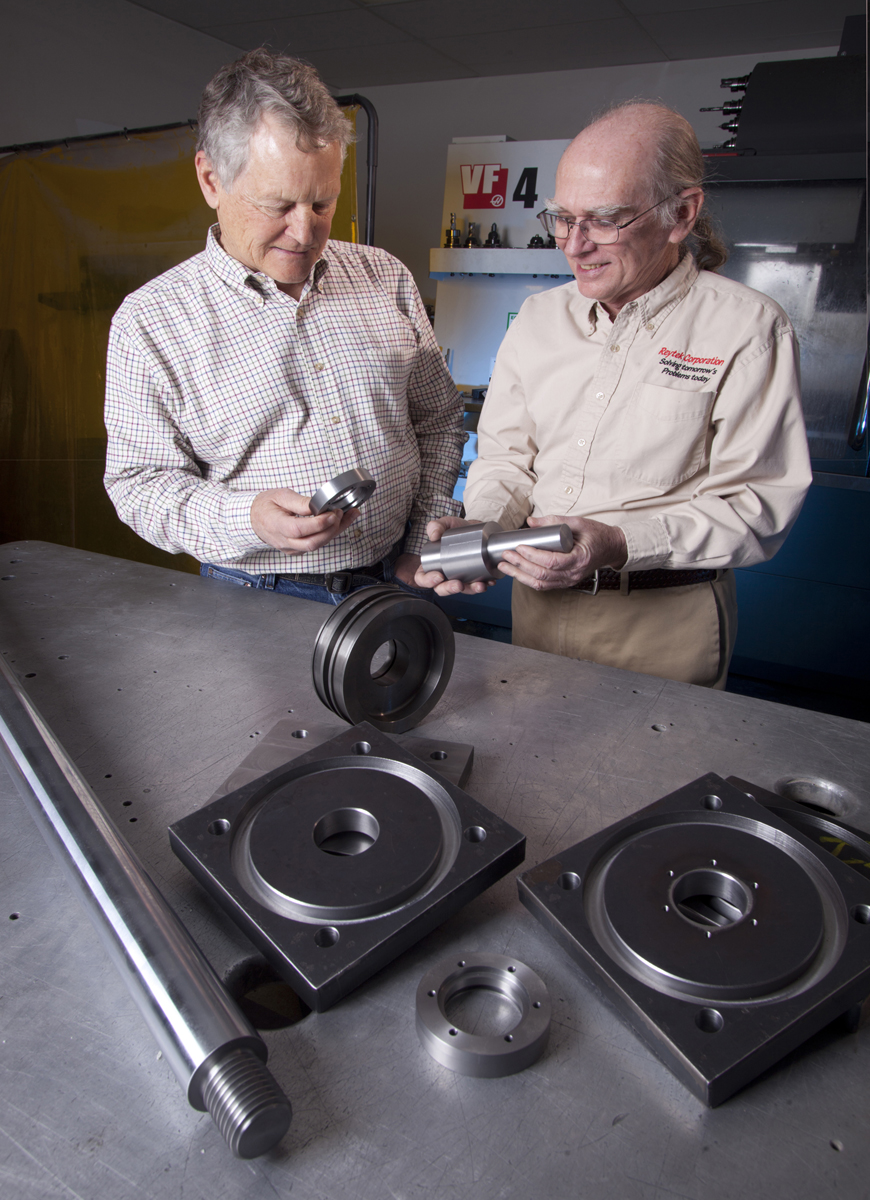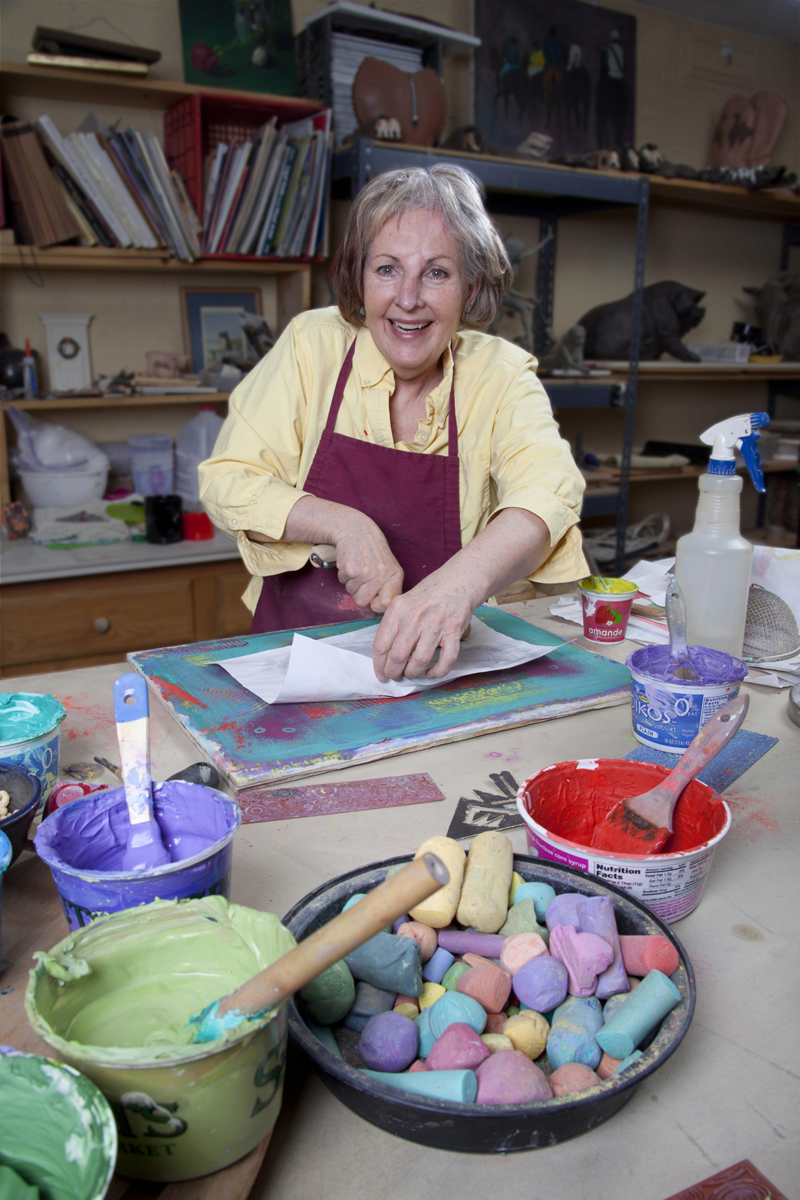ALBUQUERQUE, N.M. — Hurricane Katrina whipped up huge, powerful waves that caused severe destruction in 2005 along the Gulf Coast from Florida to Texas. The size and strength of the waves convinced Phil Kithil of Santa Fe there had to be a way to harness that energy.

His invention of a pump that converts wave power to electricity was just one idea to come from the 349 small businesses in 27 counties that participated last year in the New Mexico Small Business Assistance program, or NMSBA, a public-private partnership among Sandia, Los Alamos National Laboratory (LANL) and the state of New Mexico that connects small business owners with scientists and engineers who give technical assistance. The program provided $4.5 million worth of help last year.
Kithil’s first thought was a device that would use wave action to pump deep, cool seawater to the surface to dampen the intensity of hurricanes, which thrive on warm water. He proved the concept with a simple tube and one-way valve attached to a buoy, but the idea had no commercial potential as hurricanes are unpredictable.
He thought of a second use because the wave-action pump also brought to the surface concentrated ocean nutrients such as phosphate and silicate that promote the growth of phytoplankton. “Phytoplankton take in carbon dioxide to metabolize nutrients and give off oxygen,” Kithil said. “We felt the pumps had a role to play in climate change.”
But, again, the business potential evaporated when governments participating in the 2009 United Nations conference on climate change failed to take concrete action that would open markets for the device.
The third idea was the charm. Kithil and his company, Atmocean Inc., partnered with the Albuquerque firm Reytek Corp. to produce a pump system that converts wave power into electricity. Working with the NMBSA, the two companies perfected the technology and moved it closer to market by attracting a significant investment.
NMSBA collaborations get recognition
Ten NMSBA projects that achieved outstanding innovations last year, including the Atmocean and Reytek collaboration, were honored at the program’s annual Innovation Celebration Awards event. They received the first Honorable Speaker Ben Lujan Award for Small Business Excellence as the honoree that demonstrated the most economic impact. The award is named for the late former speaker of the New Mexico House of Representatives.
“NMSBA has been bringing small businesses together with scientists and engineers from Sandia and Los Alamos national laboratories for more than 12 years. We are grateful to the principal investigators who work with New Mexico’s small businesses,” said Jackie Kerby Moore, manager of Technology and Economic Development at Sandia. “Together they are implementing innovative ideas and stimulating our state’s economy.”
Kithil and Phillip Fullam, chief engineer of Reytek, worked with Sandia’s Rick Givler, a specialist in modeling physical systems, to assess the feasibility of their waves-to-electricity concept. Givler proved that, using typical waves and a set number of seawater pumps, considerable pressurized water would reach the onshore array of Pelton water impulse turbines, which extract energy from moving water.
Sandia’s findings helped Atmocean attract a six-figure investment to continue product testing, add staff and boost component manufacturing at Reytek. “Rick’s work was absolutely essential to our moving forward with the business model,” Kithil said. “We think our system is very viable and we’ll do more testing this summer.”
Success stories throughout New Mexico

A mystery involving clay led to another NMSBA success story. Santa Fe sculptor Carrie Quade offers art workshops through her company Squlptures Inc. and teaches a unique method of monoprinting using pigmented clay. The technique worked well in Pennsylvania, where she previously lived. But in New Mexico the clay didn’t print.
Sandia materials researcher Amy Allen used electron microscopy and mass spectroscopy to determine that a surfactant film on the clay — likely caused by New Mexico’s dry weather — prevented printing. “It was such a puzzle,” Quade said. “Amy told me to treat the clay with a vinegar solution, and that solved the problem. It was wonderful working with her.”
Some other projects recognized at the Innovation Celebration:
- Kids Hardware Kompany owner Tina Bagon worked with Sandia design engineer Trish Selcher after finding that the fastener for her company’s shoehorn for children could be removed, causing a choking hazard. Bagon investigated design options and prototypes and used 3-D printing for a visual representation of the safer, final design.
- Stephen Lueckenhoff, a registered respiratory therapist and president of Inspyrd Products, was concerned with the safety of in-home medical concentrators or liquid oxygen systems. He invented the Tube-B-Gone, a device that retrieves up to 50 feet of oxygen tubing and eliminates tripping hazards. He worked with Sandia electromechanical design engineers Ernie Garcia and Ken Pohl to address tangling problems, add a low-voltage DC motor and radio frequency controller and improve the unit’s design.
- MuleShoe Engineering designed a device that can separate natural gas from the water pumped out of gas wells. Marion Vance of Los Alamos analyzed MuleShoe’s device using various simulations that provided insight into the physics of how it works. The device is able to collect the natural gas that would otherwise be wasted, and can now be sold.
- Chantal Lau of PediBioMetrix worked with LANL engineers Jim Watts and Larry Bronisz to develop devices to shorten neonatal intensive care stays and save money.
- Farmers and ranchers in eastern New Mexico asked NMSBA for help exploring the renewable energy potential of their land. Loren Toole of LANL and Craig White of the University of New Mexico offered a five-course class that covers wind data evaluation, wind turbine siting, power markets and pricing and other factors affecting wind energy development.
NMSBA was created in 2000 by the state legislature to bring national laboratory technology and expertise to small businesses in New Mexico, promoting economic development with an emphasis on rural areas. Since its inception, the program has provided 2,036 small businesses with more than $34 million worth of research hours and materials. The program has helped create and retain 2,874 New Mexico jobs at an average salary of $38,647, increase small companies’ revenues by $145 million and decrease their operating costs by $72.6 million. These companies have invested $43 million in other New Mexico goods and services and received $52 million in new funding and financing.
For further information about NMSBA, call Genaro Montoya at (505) 284-0625 or visit the website.
Click here for more information on Sandia’s technology partnerships.